Fibaro FGR-222 “Roller shutter”
The module

The Jeedom visual
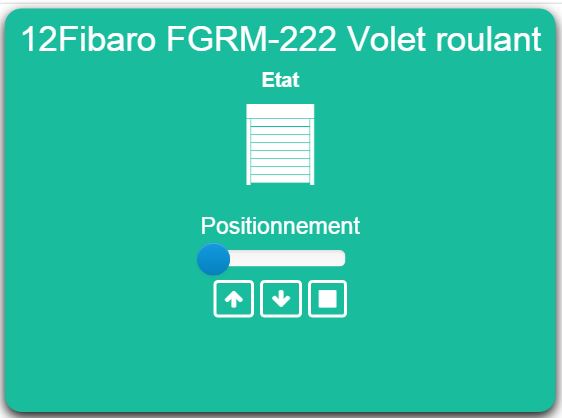
Summary
The FGR-222 micromodule will allow you to manage the shutter motorizations with electronic stop, the Venetian blinds or even the garage doors thanks to the Z-Wave protocol while keeping your existing switch. You will therefore be able to activate the connected motor using the existing switch, a Z-Wave transmitter or directly from the button on the micromodule.
In addition, this micromodule is capable of transmitting the instantaneous (W) and cumulative (KWh) electrical consumption of the equipment attached to it.
A Z-Wave controller (remote control, dongle…) is necessary in order to integrate this module into your network if you already have an existing network.
Each Z-Wave module works like a wireless repeater with the other modules, to ensure total coverage of your home.
NOTE : This module requires neutral to operate.
Fonctions
- Control your blinds or roller shutters remotely
- Compatible with BSO and venetian blind with slat positioning
- Installs behind an existing switch
- Up / down and positioning function
- Compatible with motors with mechanical or electronic stop
- Measurement of instantaneous and cumulative consumption
- Wireless update with the Fibaro Home Center 2 box
- Z-Wave network coverage test function
- Small, discreet and aesthetic
- Ease of use and installation
Technical characteristics
- Type of module : Z-Wave receiver
- Food : 230V, 50 Hz
- Power consumption : < 0,8W
- Wiring : 3 wire, neutral required
- Max load : 1000W
- Frequency : 868.42 Mhz
- Signal strength : 1mW
- Transmission distance : 50m free field, 30m indoors
- Dimensions: 17 x 42 x 37 mm
- Operating temperature : 0-40 ° C
- Limit temperature : 105°C
- Standards : LVD (2006/95 / EC), EMC (2004 / 10B / EC), R & TTE (1999/5 / EC)
Module data
- Mark : Fibar Group
- Name : Fibaro FGR-222
- Manufacturer ID : 271
- Product Type : 770
- Product ID : 4096
Configuration
To configure the OpenZwave plugin and know how to put Jeedom in inclusion, refer to this Documentation.
IMPORTANT
To put this module in inclusion mode, press the inclusion button 3 times, according to its paper documentation.

Once included you should get this :

Commandes
Once the module is recognized, the commands associated with the module will be available.
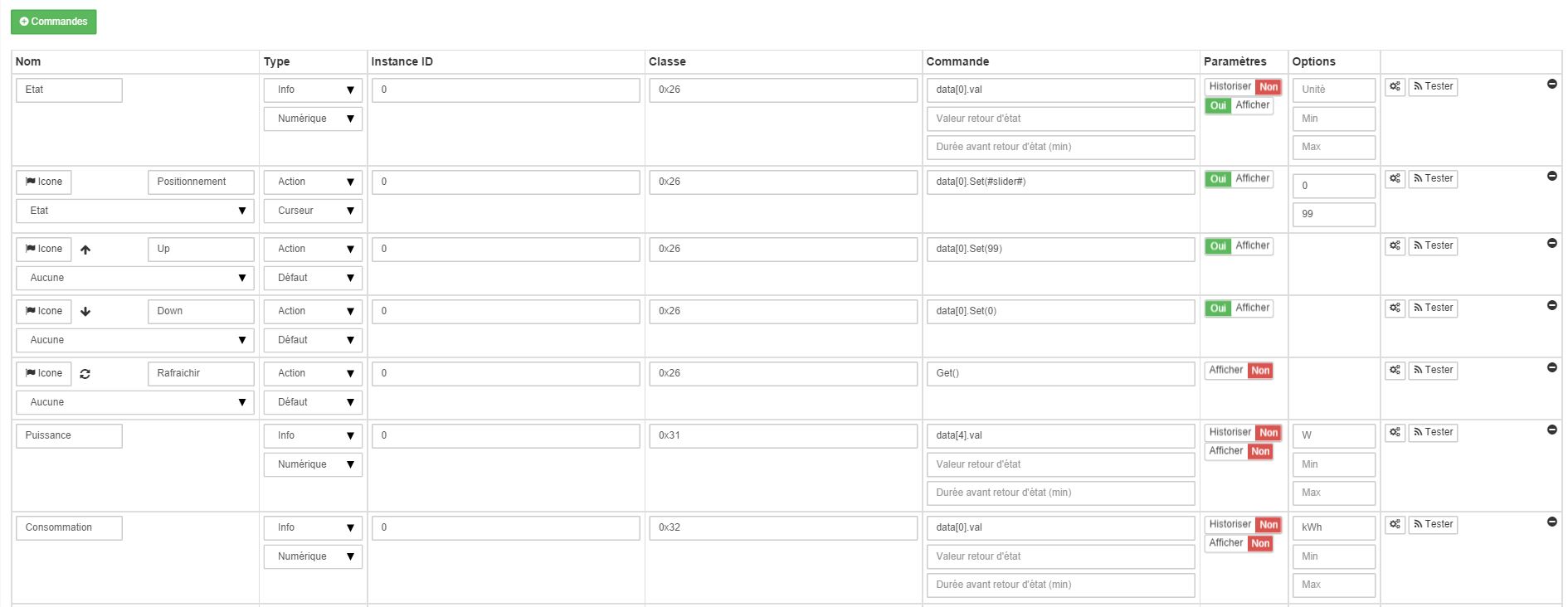

Here is the list of commands :
- State : It is the command which allows to know the position of your shutter
- Positioning : It is the command which makes it possible to define the percentage of opening
- Up : This is the command that allows you to fully open the shutter
- Down : It is the command that completely closes the shutter
- Refresh : It is the command which allows to ask again the position of the shutter
- Power : Command allowing to have the consumption of the module
- Consumption : Command allowing to know the instantaneous power used by the module
- STOP : Control to stop the movement of the shutter
- STOP BSO : Control to stop the movement (in adjustable slat mode)
- Tilt : Allows you to tilt the slats (adjustable slat mode)
- Decline : Used to decline the slats (adjustable slat mode)
- Not : Used to define the step for pressing Decline or Incline
Configuration of the module
Then if you want to configure the module according to your installation, you have to go through the “Configuration” button of Jeedom’s OpenZwave plugin.

You will arrive on this page (after clicking on the Settings tab)

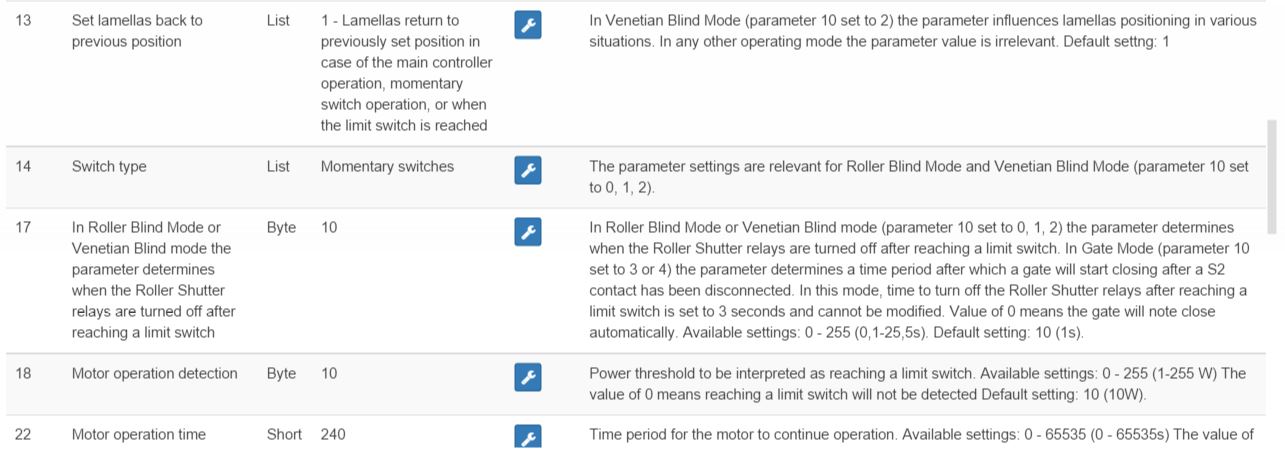
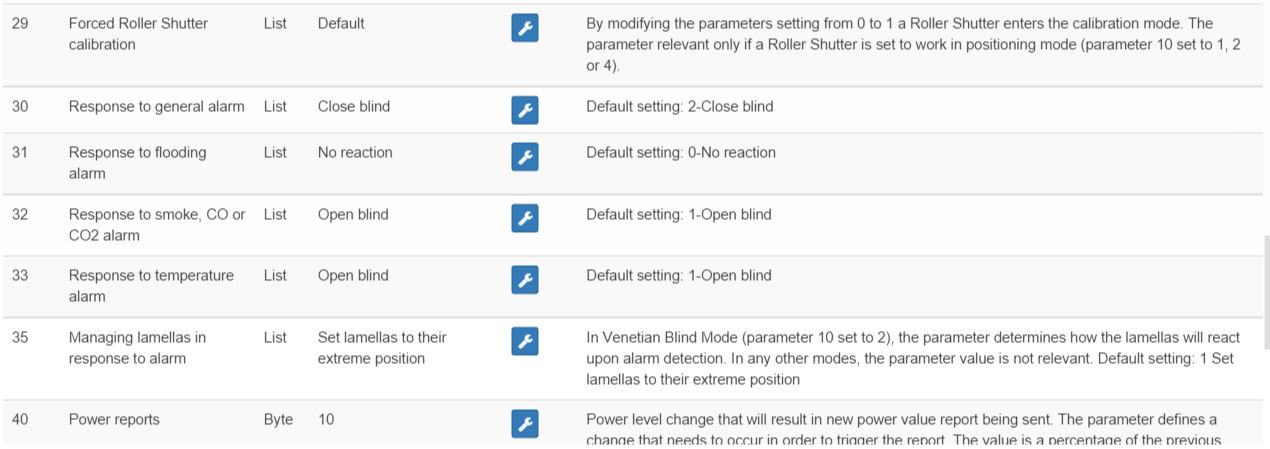

Parameter details :
- 1: allows to block the module (to freeze a shutter) (in the case of pressing a switch)
- 2: ditto but for zwave commands
- 3: type of reports (classic or fibar)
- 10: operating mode (Venetian blind, shutter, etc.))
- 12: duration of a full turn (in Venetian blind mode)
- 13: allows you to choose when the slats should return to their previous position
- 14: allows to choose the type of switch
- 17: allows to choose how long after the limit defined in 18 the shutter stops
- 18: engine safety power
- 22: NA
- 29: allows to calibrate the flap
- 30 to 35: allows to define the behavior of the module in front of the different zwave alarms
- 40: power delta to trigger a rise in information (even outside the period defined in 42)
- 42: info feedback period
- 43: energy delta to trigger an ascent of information (even outside the period defined in 42)
- 44: allows to choose whether or not the consumption and the power must include that of the module itself
- 50: allows to choose if the module should send the info to the nodes in association in scene mode or in association mode
Groupes
This module has 3 association groups, only the third is essential.
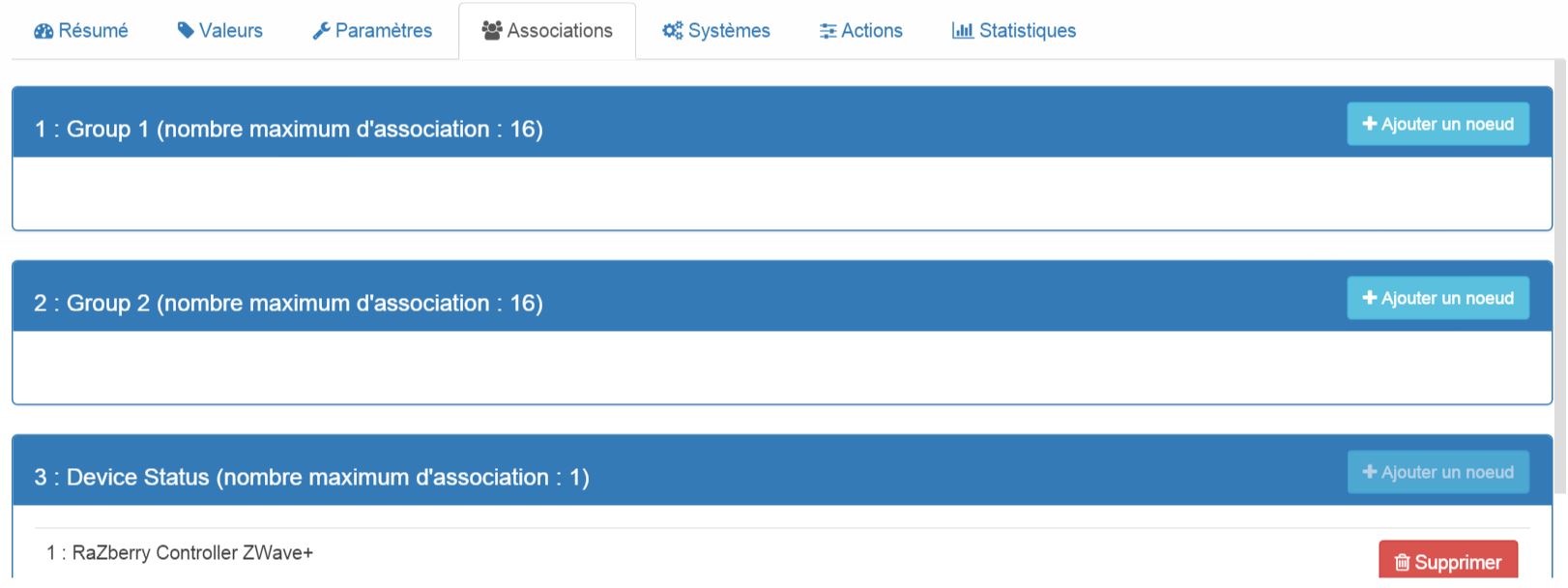
Good to know
Reset

You can reset your consumption meter by clicking on this button available in the System tab.
Important
IMPORTANT
For the status feedback to work in Jeedom, it is necessary to force the equipment calibration (parameter 29 to “Yes”) and the positioning must be active (parameter 10 with the values “Active direct”, “Active Venetian “or” Active door”).
Alternative visual
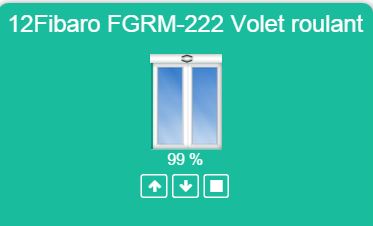
Wakeup
No notion of wakeup on this module.